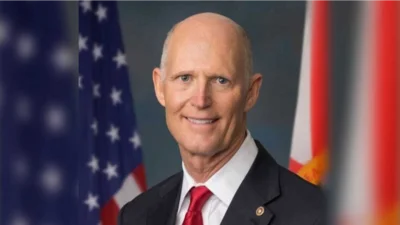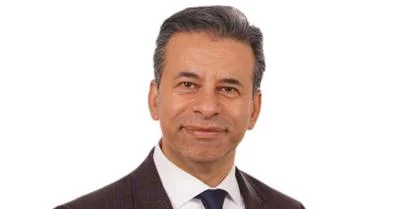The Congressional Record is a unique source of public documentation. It started in 1873, documenting nearly all the major and minor policies being discussed and debated.
“NEW ZEALAND ECONOMIC REFORMS” mentioning the U.S. Dept of State was published in the Extensions of Remarks section on pages E1262-E1263 on July 11, 1996.
The publication is reproduced in full below:
NEW ZEALAND ECONOMIC REFORMS
______
HON. SCOTT L. KLUG
of wisconsin
in the house of representatives
Thursday, July 11, 1996
Mr. KLUG. Mr. Speaker, I led a congressional delegation which visited New Zealand to study their economic reforms. We met with many people ranging from the privatization policymakers to sheep farmers and walked away with an insightful approach to rescuing an enormous Federal debt in a relatively short amount of time. Eliminating the deficit is crucial for the United States fiscal survival and the New Zealand model provides us with some options to explore. For the benefit of my colleagues, I would like to have printed in the Record the preface and executive summary of the United States-New Zealand Council report on the delegation's trip to New Zealand. For those who desire the complete report, please contact my office.
Report on Congressional Study Tour to New Zealand
preface
A bipartisan Congressional study group visited New Zealand from April 8 to 13, 1996 to examine the causes and effects of New Zealand's remarkable economic reform that has brought New Zealand from the bottom to the top of various OECD lists in terms of economic performance. The group was comprised of Congressmen Scott Klug (R-Wisconsin), William Orton, (D-Utah), and Dana Rohrabacher (R-California), plus four senior House staffers: Scott Palmer, Deputy Chief of Staff, Office of the Majority Whip; John Feehery, Communications Director, Office of the Majority Whip; Paul Behrends, Legislative Assistant for Congressman Rohrabacher; and Joyce Yamat, Legislative Assistant for Congressman Klug. The group was accompanied by Ambassador (ret.) Paul Cleveland, President of the United States-New Zealand Council, the organization which funded and arranged the trip.
In the course of a crowded and intense five day schedule, the group met with close to two hundred individuals, business leaders, non government organizations, as well as government officials, and took field trips with Telecom New Zealand, Tranz Rail, and the New Zealand Dairy Board to gain a comprehensive view of the reform process and what it has meant to a diverse group of New Zealanders and their institutions.
The Council deeply appreciates the help and sponsorship of a number of individuals and government and private institutions without whom the trip would not have been possible: the New Zealand Embassy in Washington, the United States Embassy in Wellington and the U.S. Consulate General in Auckland, the Department of State and the New Zealand Ministry of Foreign Affairs and Trade, Bell Atlantic, Ameritech, Wisconsin Central, Mobil Oil Corporation, the New Zealand Dairy Board, Air New Zealand, and all of the individuals and organizations included in the trip schedule.
The report prepared by the Council reviews the highlights and the principal points that emerged. Its accuracy and representation of views and conclusions are the responsibility of the Council and do not necessarily represent the thoughts of the members of the delegation.
executive summary
New Zealand has undergone one of the most radical economic transformation in recent years in the Western world and increasingly has become a subject for study by others, who want to know why it has been so successful.
Small, with a population of 3.5 million, and highly homogeneous compared to the United States New Zealand had prior to 1984 become the most socialized country extant outside the communist world, and as New Zealand Ambassador to the United States John Wood is wont to say, ``was performing about as well as the communists.'' Deeply in debt in 1984 with its back to the wall, ironically a new Labour government, probably the most intellectual New Zealand has ever had, introduced a comprehensive set of reforms that relentlessly tackled monetary, fiscal, labor, privatization, administration and a myriad of other problems. When Labour ran into political and economic problems that eventually divided it, a National party government was elected and finished the job of reform.
The results in only ten years proved electric. Shocked into reality, the revived economic system is currently among the best performers in the OECD. Even better indicators than the figures are the improvements in productivity, competitiveness and attitude. New Zealand is rated by responsible judges highest or close to highest in the world in all three.
Not all have benefited equally. Some Kiwis, particularly those in certain minority ethnic groups, have been left behind and disagreements over what should be done and the ability of government to deliver social and other services is as intense as in the United States and elsewhere in the world. The Congressional group heard from the dissenters as well as from the advocates.
Despite the differences in pre and post-reform positions, as well as the size and complexity of the two economies, New Zealand offers the following lessons worth further study for their possible application in the United States . . . some obvious, some less so: Speed and equal distribution of the pain of reform were politically necessary in New Zealand to reap the universal gain of reform. Effective managers and sustained attention to following through on changes are essential. Tax revenues grew surprisingly higher than expected because of the integrity introduced into the system by value added taxation. New Zealand might have done better, sooner had it introduced labor and social service reform earlier, thereby reducing these major costs early in the game. The free market absorbs naturally a sizable part of the redundancy created by reform and its worrisome cousin,
``downsizing.'' Training is an essential ingredient however, whether provided by the government or the private sector. Not only should businesses be removed from government to the private sector, where they can be managed effectively in the general interest, government itself should be made more businesslike. We can usefully study such New Zealand innovations as contracts under which senior civil servants can be hired and fired as in the private sector, cost accrual accounting and the requirement for government departments to figure in capital costs of such things as buildings and other hard assets. This practice forces government, like business, to shed unnecessary assets and costs.
____________________








